Sweet, savoury and SPICY, this easy bibimbap sauce is ready to add a burst of flavour heat to your favourite Korean recipes. Try it with your next bibimbap rice bowl, spicy rice cake skewers and so much more!
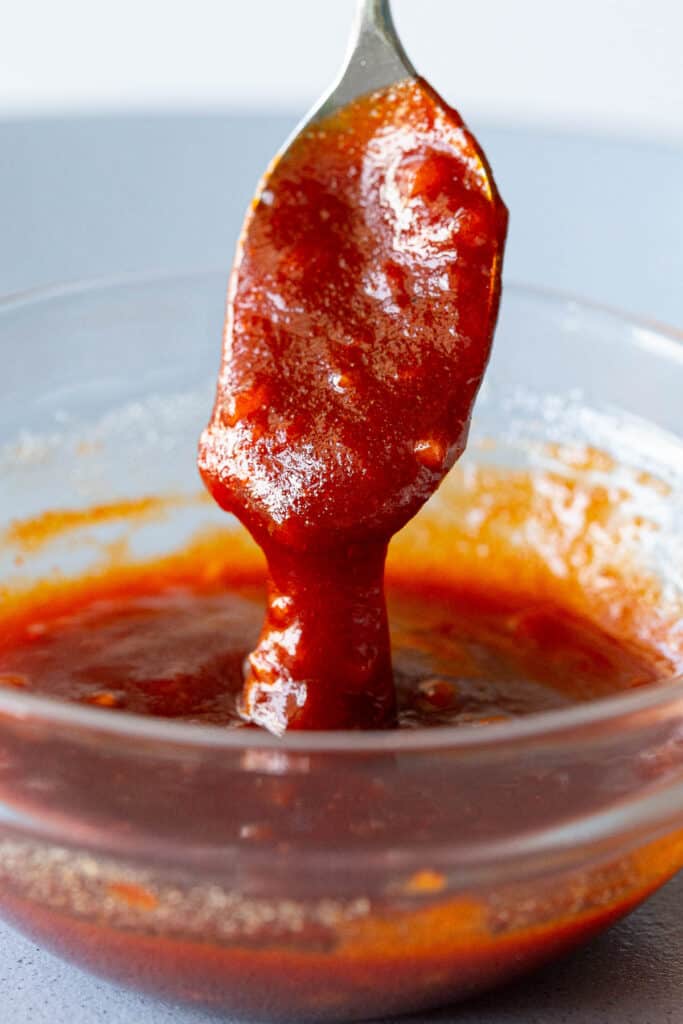
In This Post You’ll Learn
Why We Love This
This homemade Korean bibimbap sauce is super easy to make with just 6 ingredients. If you love cooking Korean food, you’re just about guaranteed to have everything on hand and ready to go right when you need it.
We love the spicy kick and subtle sweetness to this sauce, it works so well to bring out the flavours in whatever dish you drizzle it on.
Related: Gochujang Mayo / Gochujang Chicken Burgers
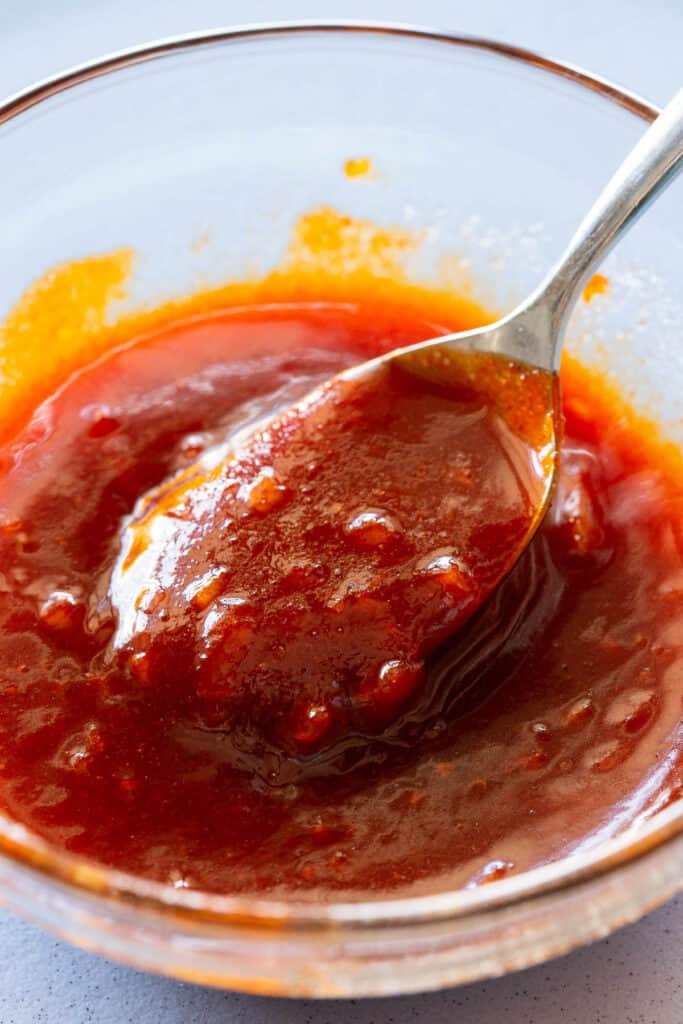
What is Bibimbap Sauce?
Bibimbap sauce is a condiment made with gochujang (Korean red pepper paste) and other classic Korean seasonings like garlic, sesame oil, rice wine vinegar and sugar.
It’s most often used as a sauce for bibimbap (Korean rice bowls mixed with veggies and meats), however can also be used as a marinade for beef or chicken.
Note: This bibimbap sauce recipe is similar to our all purpose gochujang sauce, but is made without doenjang (Korean miso) or gochugaru chilli flakes to keep it lighter and less intense.
What You’ll Need
- Gochujang / Korean Hot Pepper Paste – This fermented Korean chilli paste is spicy, but has more of a well-rounded, sweet tomato flavour rather than just pure chilli heat. (Note: You can buy an extra hot version if you want!). It’s available at Asian groceries, well stocked supermarkets in the international aisle, or online. If you can’t source it, you can make a paste out of regular red chilli flakes mixed with sugar and a dash of soy. (Use 1 tablespoon of chilli flakes for every tablespoon of gochujang required).
- Korean plum syrup extract / syrup (매실청 / maesil cheong) – Traditionally this sauce is seasoned with plum extract, however this can be harder to source depending on where you live. If you can’t find it, you can mix together brown sugar and lemon juice as a quick and easy substitute.
- Rice Wine Vinegar – Can also be labelled as rice vinegar (they’re the same thing). Adds subtle acidity and sweetness to the sauce. Sub with half the amount of any other kind of vinegar. Once mixed, you can then taste and add more if you like.
- Other Seasonings – You’ll also need garlic, sesame oil and sugar (sub with honey or maple syrup if you prefer).
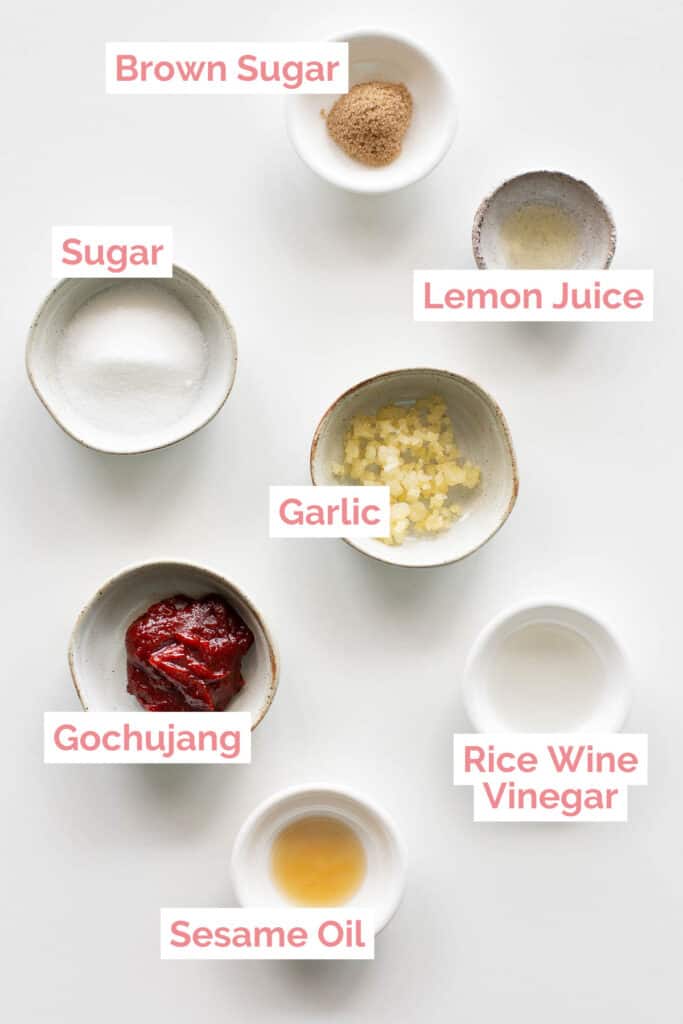
How to Make Bibimbap Sauce
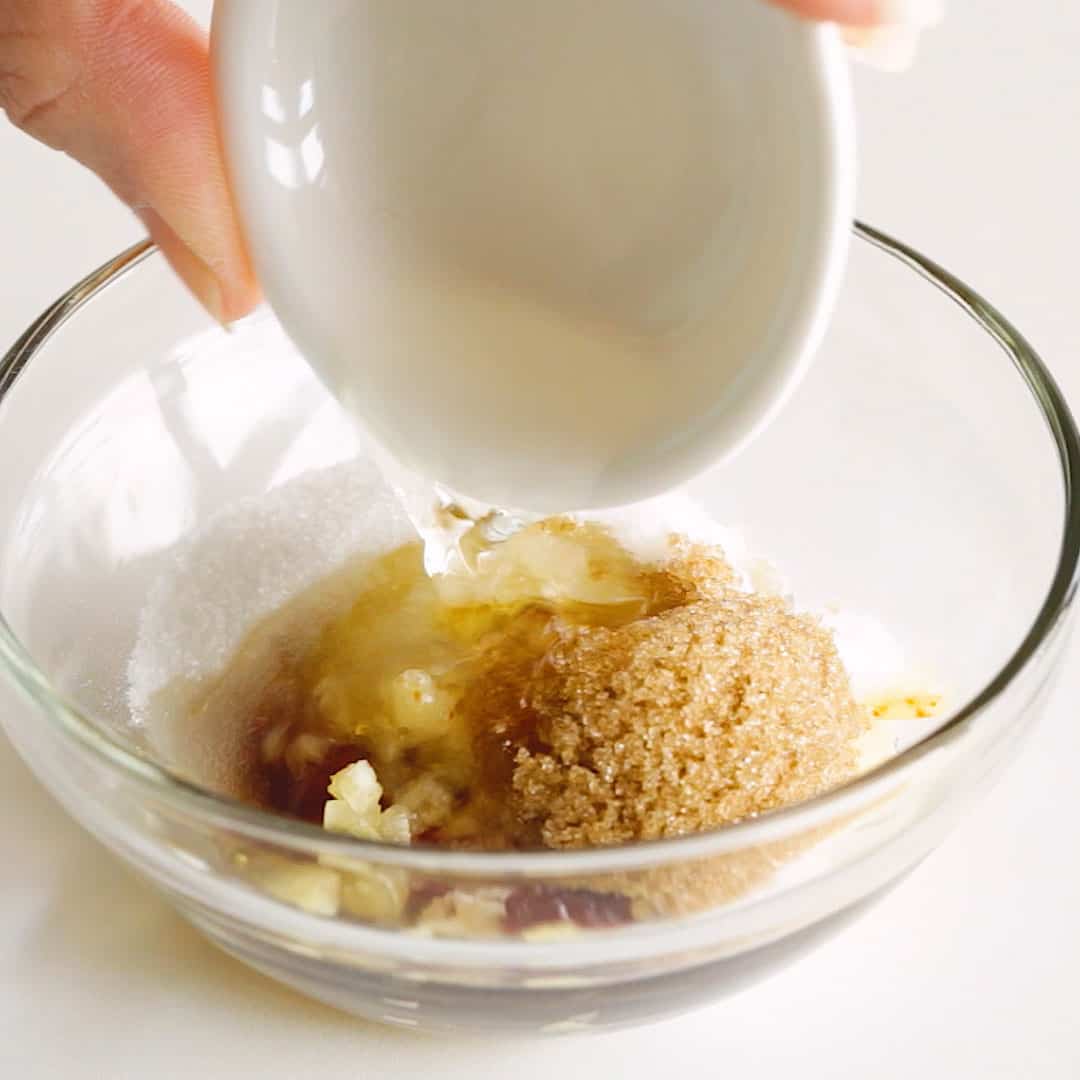
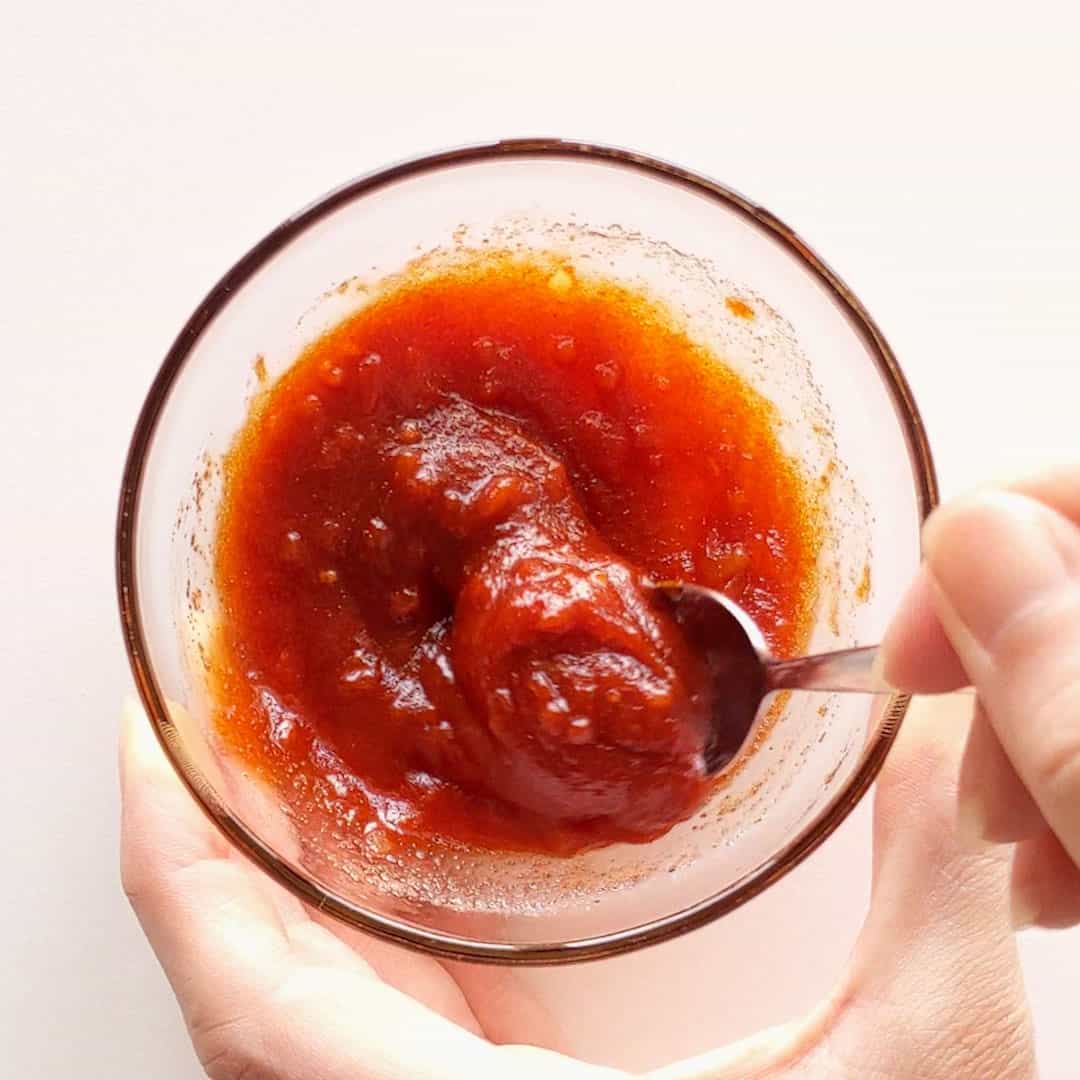
First, gather your ingredients: See recipe card below for measurements.
- In a small dish, add the gochujang, garlic, sugar, plum syrup (or brown sugar and lemon juice), sesame oil and rice wine vinegar.
- Mix together until combined. Use straight away over bibimbap bowls, or store in the fridge in an airtight container for up to 2-3 weeks until you’re ready to use it!
Wandercook’s Tips
- Tweak to Taste – Feel free to taste the sauce and add more of any ingredient to get it just how you like it.
- Storage – Store bibimbap sauce in an airtight container in the fridge for 2-3 weeks, or in the freezer for 2-3 months.
FAQs
This sauce is a great substitute for ssamjang dipping sauce for bulgogi beef lettuce wraps. You can also make some in advance and keep it on hand to use as a quick base for dishes like gochujang pasta, Korean army stew or dakgalbi chicken stir fry.
You can also use it as a basting sauce for tteokkochi rice cake skewers, or alongside gamja jeon potato pancakes or haemul pajeon seafood pancakes.
You sure can. Just swap the gochujang out for Korean miso paste (doenjang) or Japanese miso paste. The sauce will have a rich umami flavour without the heat.
Yes, this recipe is vegan, as long as the gochujang paste you use is also vegan. Most brands of store bought gochujang are vegan, but check the label if you’re unsure.
Variations
- Make it Extra Spicy – Add 1 tsp gochugaru chilli flakes (to start – add more if you know you like it really spicy).
- Make it Funky – Add extra umami flavour with the addition of soy sauce, Korean miso paste (doenjang) or Japanese miso paste.
- Add Savouriness – Add toasted sesame seeds or gomashio sesame salt (whole or ground) to taste.
- Use as a Dressing – Drizzle over blanched veggies like Korean spinach salad or bean sprout salad.
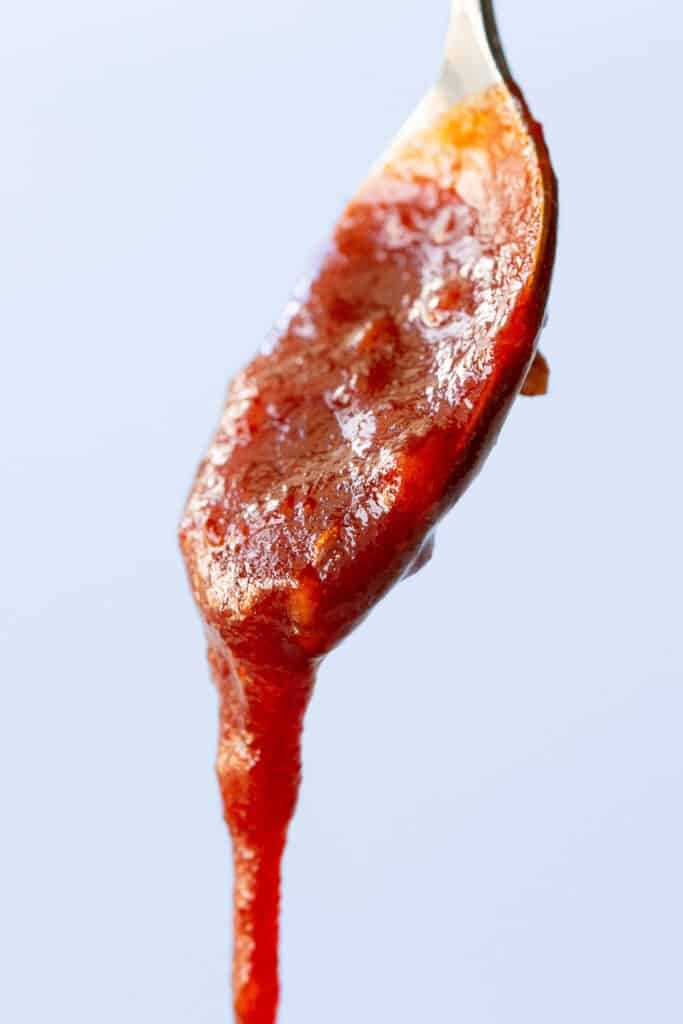
Try these amazing recipes next:
★ Did you make this recipe? Please leave a comment and a star rating below!
Ingredients
- 2 tbsp Korean hot pepper paste / gochujang
- 1 tbsp garlic
- 1 tbsp sugar sub honey
- 1 tbsp plum syrup sub ½ tbsp brown sugar and ½ tsp lemon juice
- 1 tsp sesame oil
- 1 tsp rice wine vinegar
Instructions
- In a small dish, add the gochujang, garlic, sugar, plum syrup (or brown sugar and lemon juice), sesame oil and rice wine vinegar. Mix together until combined.2 tbsp Korean hot pepper paste / gochujang, 1 tbsp garlic, 1 tbsp sugar, 1 tbsp plum syrup, 1 tsp sesame oil, 1 tsp rice wine vinegar
- Use straight away over bibimbap bowls, or store in the fridge in an airtight container for up to 2-3 weeks until you're ready to use it!
Video
Recipe Notes
- Tweak to Taste – Feel free to taste the sauce and add more of any ingredient to get it just how you like it.
- Storage – Store bibimbap sauce in an airtight container in the fridge for 2-3 weeks, or in the freezer for 2-3 months.
- Make it Extra Spicy – Add 1 tsp gochugaru chilli flakes (to start – add more if you know you like it really spicy).
- Make it Funky – Add extra umami flavour with the addition of soy sauce, Korean miso paste (doenjang) or Japanese miso paste.
- Add Savouriness – Add toasted sesame seeds or gomashio sesame salt (whole or ground) to taste.
Nutrition
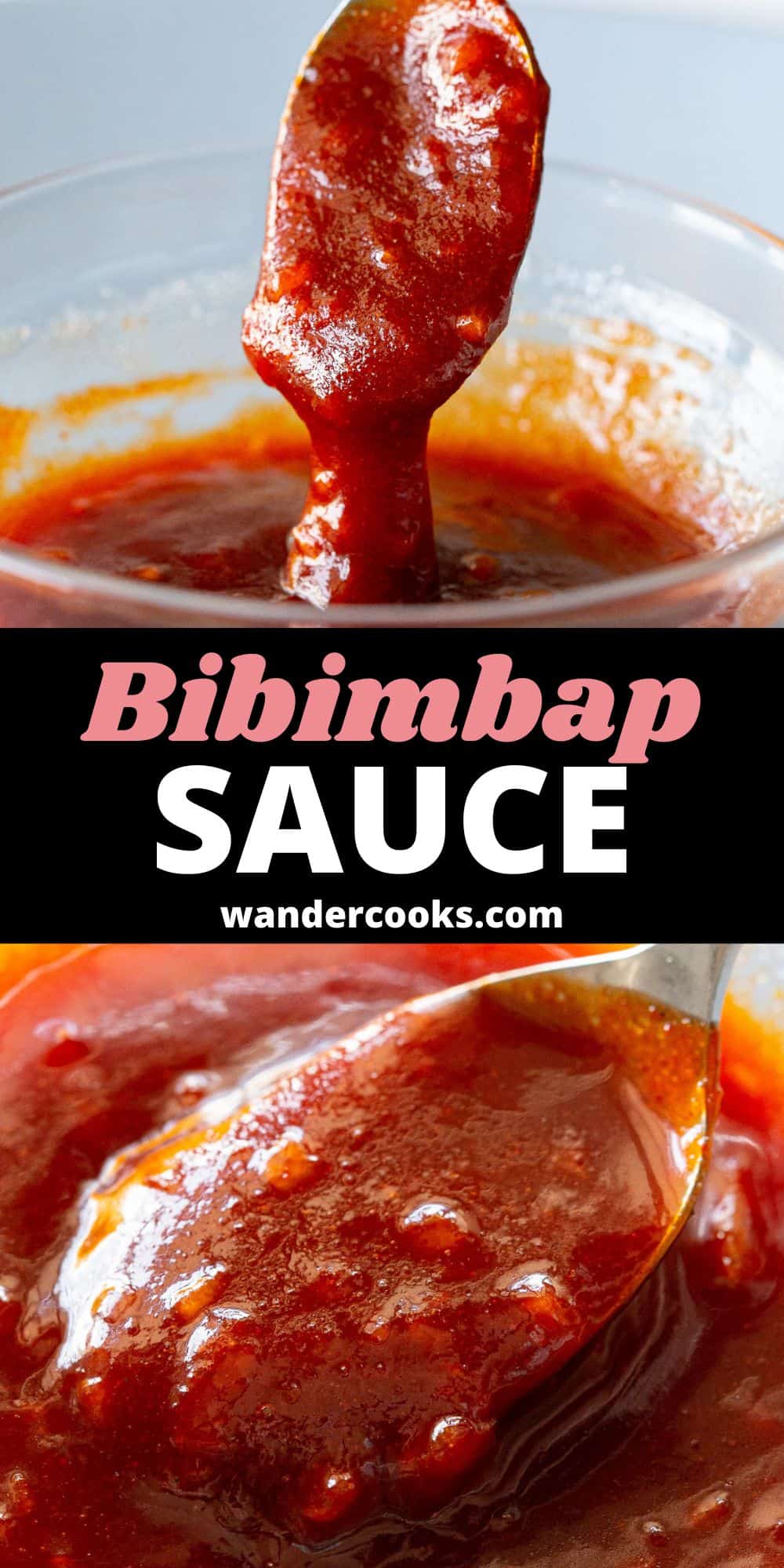

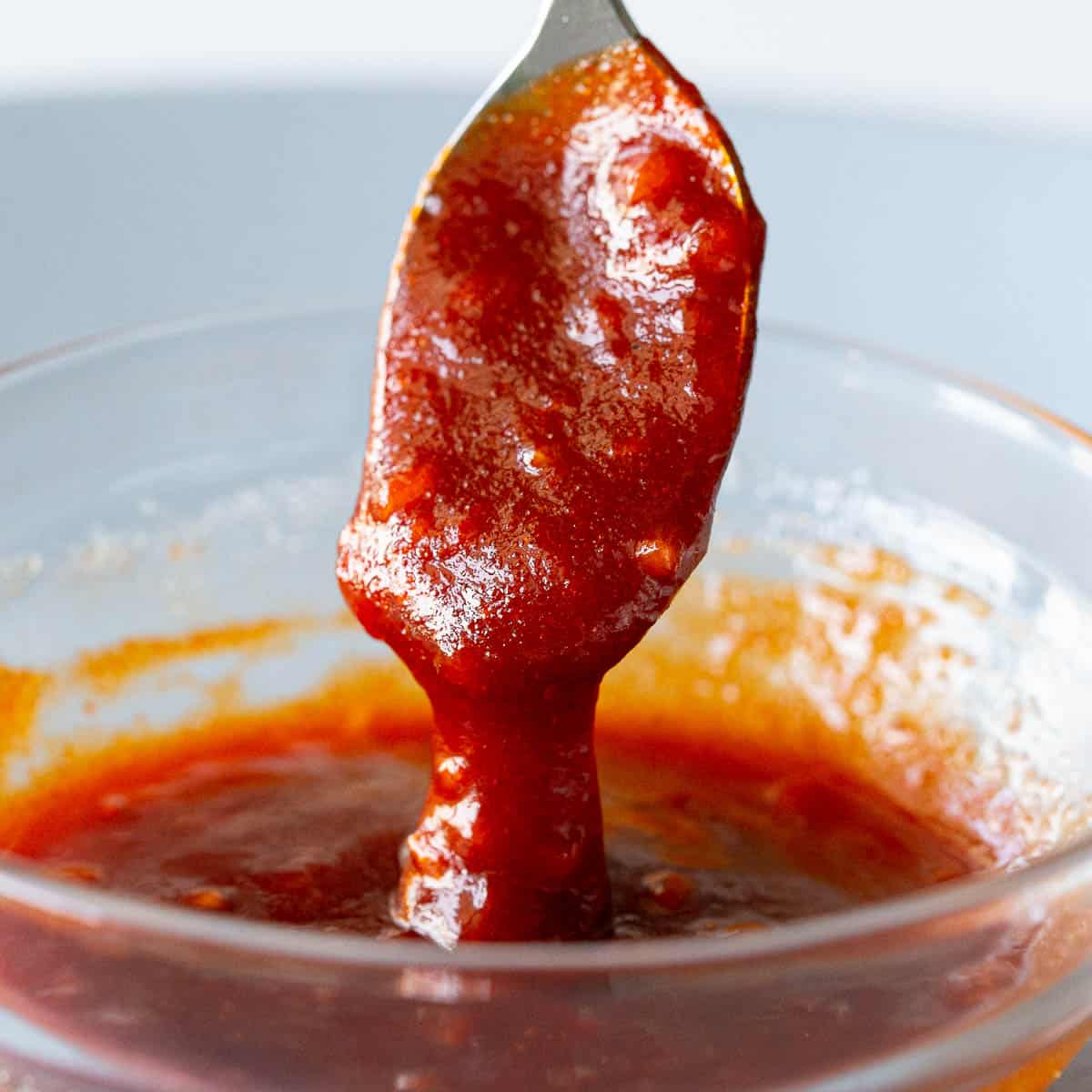



2 Comments
Michele
10/08/2023 at 8:47 pmMade this last night for my chicken bibimbap I made (first time). Had a bottle of bibimbap sauce but this was WAY better. My adjustments:
– Didn’t have the plum syrup, so used what was suggested in recipe
– Added an extra 1/2 tsp of SESAME rice wine vinegar
– Added a pinch of salt
– Added at least a tablespoon of water, because I wanted a thinner texture
– Used about 2 1/2 tablespoons of the gochujang, because I like it spicy
Very simple and now I’m thinking I’ll glaze a pork tenderloin with this…
Wandercooks
17/08/2023 at 8:47 pmNice work Michele – how good is homemade sauce! Love your adjustments, and well done adding the extra gochujang to spice things up even further.